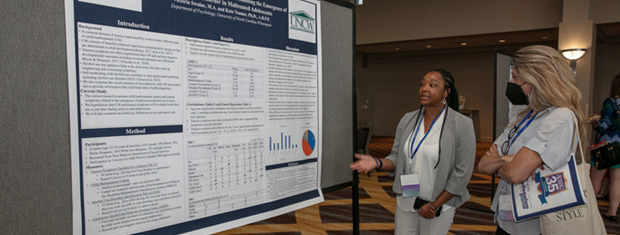




The APSAC Alert is a digital publication of the American Professional Society on the Abuse of Children.
Its purpose is to provide a brief summary of a critical body of empirical research directly informing multidisciplinary
child abuse practice, including professionals who work in mental health, social service, health, and the law.
 This library contains Alerts dating back to 2010. Many issues of the APSAC Alert are available in Spanish.
This library contains Alerts dating back to 2010. Many issues of the APSAC Alert are available in Spanish.
The most recent issue appears at the top. Scroll down to select past issues by year and issue title.
Once a publication appears in the box, you can use the Enlarge button to open the document in a new window or tab
(depending on how your browser is set up). This will allow you to view the document with larger print.
To print a document, first use the Enlarge button to open the document in a new window or tab. Then use your browser's Print command.
To return here from a new tab, close the tab. To return from a new window, click your browser's Back button.
In the listing below, click on a year and issue number to see the articles in that publication.
2010
2010 Fall
Vicarious Trauma and its ManagementVicarious trauma or empathetic strain is a form of post traumatic stress disorder which can have emotional, physical, and cognitive impacts.
A medida que el interés y la participación sobre el abuso de los niños y el trauma ha incre- mentado, así también el interés en las consecuencias imprevistas a los profesionales que hacen el trabajo. En su trabajo pionero en el final de la década setenta, Charles Figley (vea Figley 1999 para discusión) primero dio voz a lo que ahora parece ser uni- versalmente aceptado; que el trabajo con aquellos quienes son abusados y descuidados tiene ambas recompensas y castigos. “Personas bondadosas a veces experimentan dolor como un resultado directo de su exposición al material traumático de otros. ” (p. 3). Varios nombres han sido aplicados a esta experiencia bastante común pero a menudo negado noción incluyen- do fatiga de compasión, estrés traumático secundario, trauma vicario, tensión empática, la contratransferencia traumática y el trastorno de estrés pos-traumático secundario.
2010 Spring
Childhood Maltreatment and Self-InjurySelf-injury , also termed "deliberate self-harm," "self- mutilation, " and "non-suicidal self-injury," refers to an array of behaviors used to intentionally inflict harm upon oneself, for purposes that are neither socially sanctioned nor with suicidal intent (Favazza, 1998). Cutting, intentional carving of the skin, is the most common form of self-injury, and is most frequently done using razors, pins or other sharp objects on the forearms and upper legs. Other forms of self-injury include burning, pulling skin or hair, severe scratching and self bruising (typically by punching or using objects to hit oneself) and excessive tattooing (Anderson & Sansone, 2003).
La autolesión, también llamada “autodaño intencional,” auto- mutilación,” y “autolesión no- suicida,” se refiere a una serie de comportamientos utilizados para causar daño intencional hacia sí mismo, para propósitos que son ni socialmente aprodos, ni con intento suicido (Favazza, 1998). El cortarse, tallado intencional de la piel, es la forma más común de la autolesión, y es con más fre- cuencia hecha utilizando navajas de afeitar, alfileres u otros ob- jetos filosos en los antebrazos y en las partes superiores de las piernas. Otras formas de la autolesión incluyen quemarse, jalarse la piel o el pelo, rasguñarse severamente y el auto- moretearse (típicamente por medio de darse puños o utilizar objetos para pegarse a sí mismo) y tatuarse excesivamente ( Anderson & San- sone, 2003).
2010 Winter
Pediatric Burn Abuse EvaluationApproximately 3.5 million children are evaluated in the United States yearly for maltreatment. Of this number, slightly over 900,000 cases are confirmed and 16% of the cases involve physical abuse. In maltreated children, skin injuries are a commonly found type of abuse and burns are found in 5-22% of the cases. And in hospital burn units, the incidence of inflicted burns ranges from 8-25%. Burns can result in long tern disability, chronic pain and mental health illnesses. In general, abuse-related burns are most commonly seen in children under the age of 3. Accidental burn injuries are currently the third most common reason for “accidental” injury for children in the USA; fire injuries are highest in the under 5 year old age group. Due to multiple factors (limited verbal skills, no witness, etc) deciding between accidental and inflicted can be difficult.